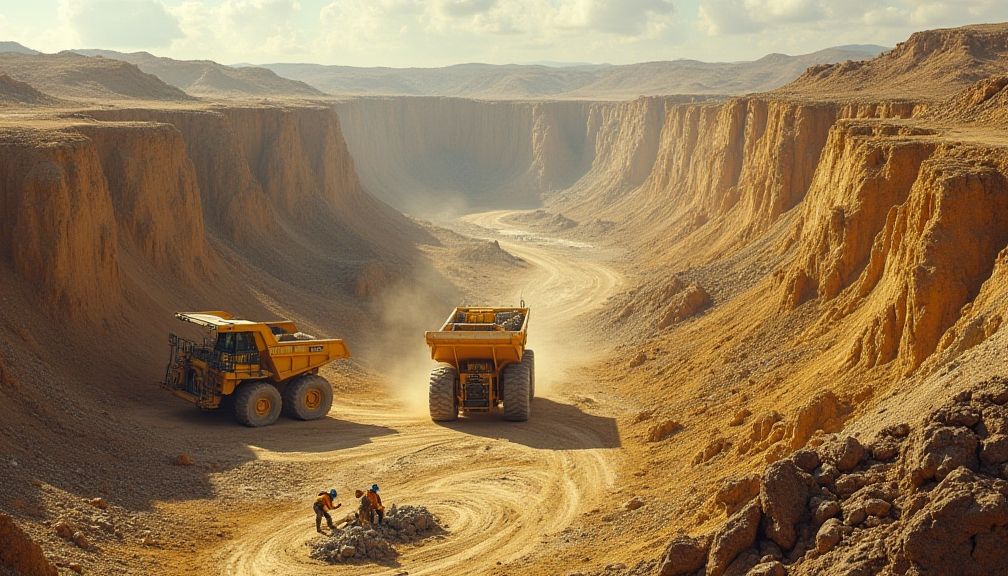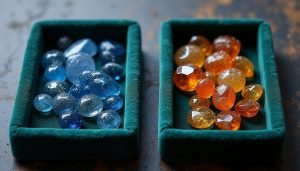Gold has captivated humanity for centuries. From its allure in jewelry to its status as a form of currency, this precious metal has profound historical, economic, and cultural significance. But have you ever wondered where your gold really comes from? Understanding the origins of gold involves a journey through geology, mining practices, and the global supply chain.
1. The Geological Formation of Gold
To comprehend the origins of gold, we first need to explore its geological formation. Gold is a naturally occurring element that can be found in its native form in the earth’s crust. It typically forms through a combination of geological processes, such as volcanic activity, hydrothermal processes, and erosion.
The most common form of gold deposits are known as ‘hard rock’ deposits, where gold is embedded in solid rock, often in quartz veins. Another common type is ‘alluvial’ deposits, where gold particles are washed away from their originating rock and deposited in riverbeds or along shores. This can create lucrative opportunities for prospectors and miners alike.

2. Mining Techniques
The extraction of gold is complex and varies based on the deposit type. There are two primary methods: ‘hard rock mining’ and ‘placer mining.’
2.1 Hard Rock Mining
Hard rock mining involves several steps. First, miners identify and extract ore from the ground and then crush it to liberate the gold. The crushed ore is then treated with chemicals like cyanide or mercury to separate gold from the other minerals. This method can be quite destructive to the environment, which raises numerous sustainability concerns.
2.2 Placer Mining
Placer mining, on the other hand, is often seen as less damaging. This method involves extracting gold from locations where it has been naturally eroded and deposited. Simple tools like pans and sluices are frequently used, although larger machinery may also be involved. Placer mining is often considered more environmentally friendly, but it still poses risks, such as habitat disruption.
3. The Global Gold Mining Industry
The gold mining industry is a massive global enterprise. According to the World Gold Council, approximately 3,500 tons of gold are mined every year, with a significant concentration in a few countries.
3.1 Leading Gold Producers
The top producers of gold include China, Australia, Russia, the United States, and Canada. Remarkably, these nations contribute to the majority of the world’s supply. For instance, China alone has been the leading producer for years, often mining over 400 tons annually.
3.2 Artisanal vs. Industrial Mining
It’s essential to distinguish between artisanal and industrial mining. Artisanal mining is small-scale and often informal, usually employing manual tools and methods. This type of mining can be prevalent in developing nations and can have negative social and environmental implications.
Conversely, industrial mining involves significant capital and advanced technology. These operations can have a more substantial economic impact and are often subject to strict regulations. However, they can also lead to significant labor issues and environmental degradation.
4. The Process from Mine to Market
Once mined, gold undergoes a series of transformations before it reaches consumers. After extraction, gold ore is sent to smelting facilities where it is refined into pure gold. This process can involve separating the gold from other metals and impurities.
Further Reading:
4.1 Refining and Assaying
Refining is a critical step that ensures the purity of gold. The minimum standard for bullion gold is 99.5% purity. Assaying is the process used to determine the metal content and purity, which helps establish the market value of the metal.
4.2 Trading and Logistics
After the refining process, gold is turned into bars or coins, and is often sold on commodities exchanges. Major exchanges, such as the London Metal Exchange and the Comex, play pivotal roles in the global gold trade. From there, gold is shipped to jewelers, investors, and financial institutions, contributing to market influences and price volatility.
5. The Ethical Aspects of Gold Mining
The journey of gold is not without its ethical concerns. Issues such as child labor, environmental degradation, and conflicts often arise in regions where gold is mined.
5.1 Conflict Gold
Conflict gold refers to gold sourced from war zones where its trade finances violence and human rights abuses. The Democratic Republic of Congo has been a hotspot for conflict gold mining, leading to international scrutiny and calls for responsible sourcing.
5.2 Sustainable Practices
In response to these issues, many organizations and companies are advocating for sustainable mining practices. Certifications like the Responsible Gold Mining Principles aim to ensure that gold is sourced responsibly, promoting environmental stewardship and social responsibility.
6. Recycling Gold: The Circular Economy
Recycling also plays a significant role in the supply chain of gold. It is estimated that around 30% of the gold supply comes from recycled materials. Jewelry and electronic devices are common sources of recycled gold.
6.1 The Benefits of Recycling
Recycling gold can significantly reduce environmental impacts compared to mining new gold. It is a more sustainable option that requires less energy and fewer materials. Additionally, it lessens the demand for newly mined gold, which can help alleviate some mining-related ethical concerns.

7. Conclusion: Understanding Your Gold
As consumers, it’s essential to understand the journey of gold, from its geological origins to its extraction, and finally to the market. Awareness of the environmental and ethical implications allows for more informed purchasing decisions. Whether investing in gold or buying jewelry, consider where the gold comes from and choose responsibly.
8. Learn More About Responsible Sourcing
To dive deeper into responsible sourcing and understand more about the gold industry, consider researching organizations that advocate for better mining practices. By educating ourselves, we can contribute to positive changes in the gold market.








